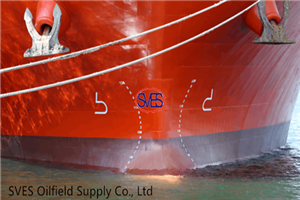
Dozens of Russian Oil Tankers Stranded Due to U.S. Sanctions
2024-05-31 10:00Dozens of Russian oil tankers stranded due to U.S. sanctions
Months after U.S. Treasury sanctions, dozens of oil tankers remain inoperable. This shows that the United States has the ability to disrupt Moscow's oil supply chain. Since October, 40 ships involved in the Russian oil trade have been placed on the Treasury Department's designated entities list, mostly for breaching price caps designed to limit the Kremlin's access to petrodollars.

Only the SCF Primorye has shipped one cargo since its inclusion on the list. If it can successfully unload its cargo of oil, it could encourage Russia to use more ships again. Sanctions and price caps imposed on Russia have been accused of being too easy for Moscow to circumvent, as Russian crude flows have been heavy. However, the stalling of the fleet shows that measures taken on individual vessels are effective.
Twenty-one of the 40 ships belong to Russian state shipping company Sovcomflot PJSC. Most of the other 19 ships are controlled by United Arab Emirates-based Hennesea Holdings Ltd. The sanctioned vessels make up a small part of the shadow fleet, which has been built with the help of agency companies to circumvent G7 restrictions on shipping services.
One of the 40 ships, the Turkish-owned Yasa Golden Bosphorus, was removed from the list in April and can benefit from international standard services such as insurance. Since being delisted, the ship has carried a cargo of U.S. crude oil but remains anchored off the Texas coast.
The remaining sanctioned ships are idle and empty and scattered around the world, according to ship tracking data compiled by Bloomberg. Eight tankers belonging to Russian shipping company Sovcomflot are docked near the Russian Pacific ports of Vladivostok and Nakhodka, some for as long as five months. One tanker anchored there has been returned to the Suez Canal empty, while another has been sent to a repair dock in China.
Another group of idle oil tankers recognized by the Russian Merchant Shipping Company has gathered in the Black Sea. Shortly after arriving, each ship appeared to turn off the transponders that reported their positions to digital tracking systems. However, given that the ships will need to provide signals if they are to leave the Black Sea through Turkey's narrow Bosporus Strait, it is almost certain that all the ships are still in the area.
The first of seven fleets arrived in December. The latest fleet arrived in the Black Sea earlier this month after delivering the final cargo of crude to China, which the company loaded at the Pacific port of Kozmino days before sanctions were imposed in February. The company's other three sanctioned ships are located in the Baltic Sea. Two of them are anchored outside the Ust-Luga export terminal. The other is further west, off the coast of Estonia, where it has been anchored since late February.
Of the sanctioned Hennessey tankers, the only one that looks like it may still be operating is the LR2 tanker Apus. It left Port Said at the end of March and arrived in the Persian Gulf in mid-April. It then traveled at less than 1 knot near Iran's Sorosh oil field for several days before heading toward the UAE's Fakkan Gulf, where it was last seen in late April.
Source from: Energy Public Opinion
